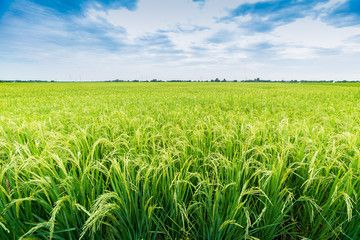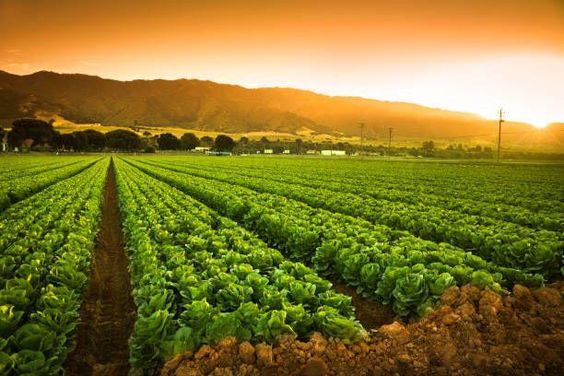Powering the Future of Farming: Agricultural Energy Utilization Systems in Smart Agriculture
Agricultural Energy Utilization Systems sector faces a multitude of challenges in the 21st century. Rising populations, climate change, and resource scarcity demand innovative solutions to ensure food security and sustainable practices. Smart agriculture, with its integration of technology and data-driven approaches, offers a promising path forward. A crucial aspect of smart agriculture is the efficient and sustainable utilization of energy. This article explores the concept of agricultural energy utilization systems (AEUS) and their role in revolutionizing the way we farm.
Contents
The Need for Efficiency: Energy Consumption in Agriculture
Modern agriculture relies heavily on energy for various purposes, including:
- Land preparation and cultivation: Tractors, plows, and other farm machinery require significant amounts of fuel.
- Irrigation: Pumping water for irrigation consumes a substantial amount of energy, particularly in arid regions.
- Greenhouses and controlled-environment agriculture: Maintaining optimal temperature, humidity, and lighting conditions within greenhouses demands significant energy input.
- Livestock production: Ventilation, heating, and cooling systems in poultry houses and animal barns contribute to the overall energy footprint.
- Post-harvest processing and storage: Drying, refrigeration, and other post-harvest processes require energy to ensure product quality and shelf life.
This reliance on traditional energy sources like fossil fuels comes with drawbacks. It contributes to greenhouse gas emissions, creates air and water pollution, and exposes farms to price fluctuations of these resources.
The Rise of Agricultural Energy Utilization Systems
Agricultural Energy Utilization Systems,AEUS refers to a comprehensive approach to managing energy use within an agricultural production system. It integrates various technologies and strategies to optimize energy consumption, reduce reliance on non-renewable sources, and promote sustainability. Here are some key components of an AEUS:
- Renewable Energy Sources: Solar panels, wind turbines, and biogas digesters can generate clean electricity to power farm operations. Solar energy, in particular, is highly suited for agricultural settings due to ample land availability. Biogas generated from agricultural waste provides a sustainable and efficient way to meet energy demands.
- Energy-efficient Equipment: Modern farm machinery is increasingly designed with energy efficiency in mind. Features like variable-speed drives and precision agriculture technologies help reduce fuel consumption and optimize resource utilization.
- Smart Grid Integration: Integrating farms with smart grids allows for two-way communication and dynamic energy management. Farms can sell excess renewable energy back to the grid during peak production times and purchase power when needed.
- Precision Agriculture Techniques: Sensors, data analytics, and automation tools enable farmers to make informed decisions regarding irrigation, fertilization, and pest control. This minimizes energy waste by applying resources only where and when needed.
Benefits of Implementing AEUS
The adoption of AEUS offers a multitude of benefits for farmers, the environment, and the agricultural sector as a whole:
- Reduced Costs: AEUS can significantly lower energy bills for farms by promoting self-sufficiency through renewable energy generation and energy-efficient practices.
- Sustainability Agricultural Energy Utilization Systems: By transitioning to renewable energy sources and reducing dependence on fossil fuels, AEUS contributes to a smaller carbon footprint and a more sustainable agricultural system.
- Improved Efficiency: Precision agriculture techniques and smart monitoring systems optimize resource utilization, leading to increased productivity and reduced waste.
- Enhanced Farm Management: AEUS provides farmers with real-time data and insights into their energy consumption, enabling them to make data-driven decisions to improve efficiency throughout their operations.
- Resilience and Security: Reduced reliance on fossil fuels and increased energy independence can enhance farm resilience against price fluctuations and supply chain disruptions.
Challenges and Considerations
Agricultural Energy Utilization Systems,While AEUS presents a compelling vision for the future of agriculture, some challenges need to be addressed:
- Initial Investment: The initial costs of installing renewable energy systems and smart technologies can be substantial for some farms. Government incentives and financing programs can play a crucial role in making AEUS more accessible.
- Technical Expertise: Integrating and managing complex AEUS may require specialized knowledge and training for farmers. Educational programs and support structures are necessary to facilitate adoption.
- Grid Infrastructure: In some regions, the existing grid infrastructure may not be readily equipped to handle the integration of distributed renewable energy sources generated by farms. Upgrading grid infrastructure is crucial to accommodate the transition to AEUS.
Conclusion Agricultural Energy Utilization Systems
Agricultural energy utilization systems are a cornerstone of smart agriculture. By adopting these systems, farms can achieve greater energy efficiency, reduce their environmental impact, and become more resilient and profitable. Collaboration among farmers, researchers, policymakers, and technology providers is essential to overcome challenges and unlock the full potential of AEUS. As we move towards a more sustainable and resource-conscious future, empowering farms with efficient and clean energy solutions will be critical in ensuring food security for generations to come.




